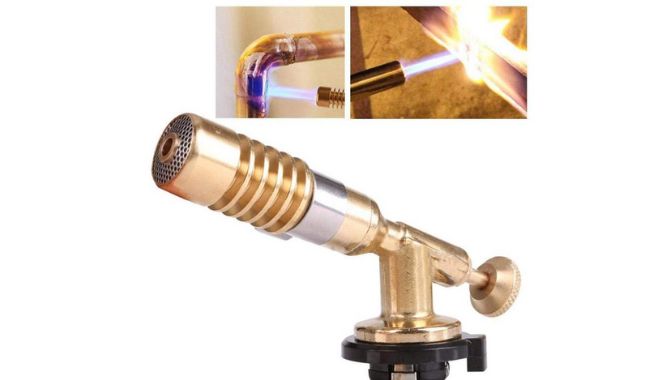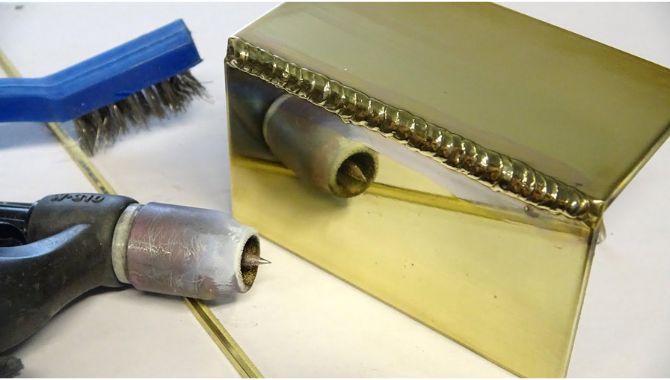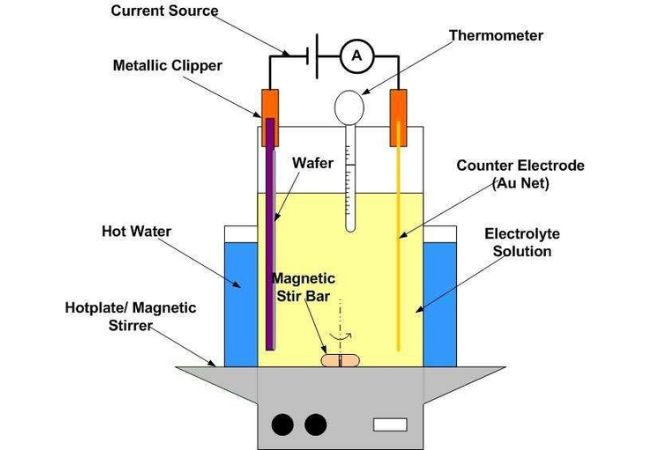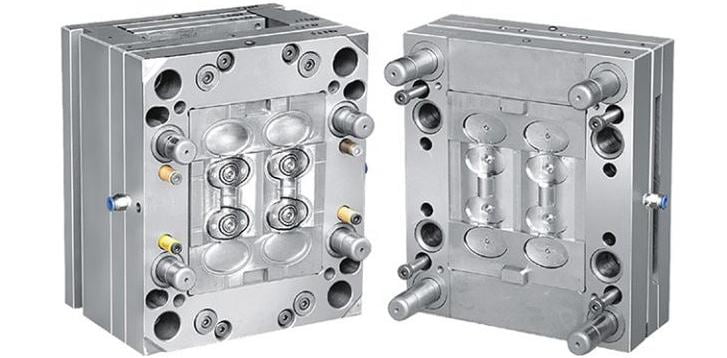Brass Welding: A Guide for Beginners & Experts
Upload Time:
Feb 25, 2024
Brass welding is not quite the straight forward undertaking given its constituent composition. Today’s guide will show you how to weld brass more efficiently. Whether you want to learn about the technique, equipment, features, safety procedures, or applications – all information you are looking for is right here.
What is Brass?
Brass is an alloy metal derived from the combination of copper and zinc usually with a larger copper ratio. The elemental concentration determines the color of brass which typically varies between a gentle yellow hue and reddish-yellow appearance.
Some of the notable properties of brass include: thermal and electrical conductivity, resistance to corrosion, machinability and hardness.
Brass also portrays low friction quality and its inflammability property allows use with explosive and highly flammable materials.
 Brass Material Suitable for Welding
Brass Material Suitable for Welding
Main Elements in Brass (Learn How the Elements Influence Brass Welding)
The primary constituents of brass are copper and zinc commonly found in a 60:40 percent ratio. You find these elements have different melting points making the brass welding process challenging.
The melting point of zinc is lower than that of copper. Therefore, it greatly influences the welding process. It is especially challenging where you have large zinc amounts as the different melting points can cause cracking and porosity.
 Copper Brass Welding
Copper Brass Welding
Common Challenges in Brass Welding
Brass welding can be a challenging task given its structural composition. Some of the common challenges when welding brass include:
i. Zinc’s lower melting point than copper can result in cracking and porosity when welding brass with a high zinc percentage.
ii. Poor shielding of brass during welding can cause an aggressive reaction of zinc with the environment resulting in toxic fumes. The welds can also become porous making them weak.
iii. Since brass contains two metal elements with different melting points, overheating can instigate an elemental separation weakening the material.
iv. Zinc evaporation can occur when brass welding given its low melting point thus requires soft arc or mild flames. Zinc evaporation hampers the formation of proper seams.
Preparations before Brass Welding Process.
Before undertaking the brass welding process, it is important to undertake the following preparations:
- Shape your brass pieces according to the design by cutting using special saws or shears.
- Utilize appropriate bending methods to manipulate your brass workpiece into the desired form.
- Prepare your work area ensuring you have all the necessary equipment and the room has proper ventilation.
- Clean the brass workpieces’ surface by scrubbing using scouring pads or sandpaper to remove coatings such as paint or lacquer. An alcohol rub down eliminates such remaining particles leaving the surface particle free.
- Connect the mating brass pieces according to the design in position for welding.
Common Techniques when Welding Brass to Brass
When it comes to welding brass, there are many techniques you can use such as MIG, TIG, flame welding, oxy-acetylene welding.
Let’s discuss these techniques in detail:
· MIG Welding Brass
Metal Inert Gas (MIG) welding brass employs an electrode as consumable in attaching the brass pieces via arc welding. A shielding gas protects the welding area preventing contamination.
In selecting the consumable electrode for brass welding, ensure it matches in colour with the brass workpiece according to industry standards. Argon and carbon (IV) oxide are the common shielding gases you can employ in MIG welding brass.
Ensure you use sufficient shielding gas and keep the weld area small to minimize evaporation of zinc during the welding process.
· Flame Welding Brass
 Flame Welding Brass
Flame Welding Brass
There are three flames capable of welding brass as follows: neutral flame, carburizing flame and oxidizing flame. A neutral flame constitutes equal parts of oxygen and acetylene providing sufficient combustion without infringing the workpiece.
While you can employ a carburizing flame, it constitutes more acetylene with the undesired addition of carbon to the weld. In an oxidizing flame, the oxygen part is more than acetylene whose achievement transitions form a neutral flame.
· TIG Welding Brass
Tungsten Inert Gas (TIG) brass welding utilizes a tungsten electrode that is non-consumable in the arc creation for joining brass pieces. Argon and helium find use as shielding gases in TIG welding brass.
While DC current is applicable in TIG welding, AC current works best for brass welding with minimal heat and sporadic application. TIG welding brass is unique such that there is no contact between the brass pieces and the electrode.
Protecting the heated area with argon allows your joint to cool progressively without atmospheric exposure that can prompt porosity. Welding rods constituting CuSn6 offer you the best color matching results.
· Oxy-acetylene Welding Brass
 Welded Brass Sheet Metal
Welded Brass Sheet Metal
Oxy-acetylene brass welding supports an arc formation employing a shielded electrode that is prone to gas and slag formation. The oxygen and acetylene mix offers arc protection while the slag ensures the weld remains fairly uniform.
This welding process utilizes an oxidizing flame where the oxygen levels are in excess by between thirty and fifty percent. However, brass welding using oxy-acetylene can be challenging especially for beginners given the tendency of zinc evaporation occurrence.
· Electron Beam Brass Welding
A common electron beam welding process for brass is using laser beams with inert gasses aiding in shielding against zinc evaporation. Electron beam brass welding is only applicable at reduced working distances not exceeding 25 mm.
Diode and solid state lasers offer the best results with a featured cross jet in the nozzle aiding against zinc evaporation.
 Electron Beam Welding
Electron Beam Welding
Safety Equipment in Brass Welding
When brass welding, it is important to consider personal safety as a high priority. Consequently, you need to use safety equipment such as descried below:
i. Protective Boots and Gloves: Offer protection from burns caused by sputtering zinc after melting of the brass workpiece.
ii. Fume Extractor: Melting brass workpieces at high temperatures can result in zinc evaporation whose fumes are toxic. A fume extractor is useful in closed work areas otherwise you can work outdoors.
iii. Safety Glasses and Helmet: The arc brightness in brass welding especially when using TIG or MIG welding poses harm to the eyes. Wearing darkened glasses helps protect against eye damage whereas a helmet can also offer spark and heat protection.
iv. Overalls: A long-sleeved piece of clothing utilizing fire-resistant fabric like overalls protects you from the welding heat, UV rays and arc sparks.
Welding Joints in Brass Welding
 Types of Weld Joints
Types of Weld Joints
There are different welding joints that you can create when brass welding contingent on your desired configuration. Some common welding joints include:
i. Butt Joint – The butt joint allows joining of the sides of a pair of brass pieces by positioning them in a similar plane. It is a popular welding joint that is easy to apply.
ii. Lap Joint- Creation of lap joints is specific to metal sheets in which you position a pair of brass sheets one over the other.
iii. Tee Joint- The brass piece pairing in a Tee joint results in a T-shape with a 90o separation. You can also achieve a Tee joint by welding a brass piece to a base.
iv. Edge Joint- In creating an edge joint, you position brass surfaces such that they’re with uniform edges. This joint is the strongest and toughest supporting great localized forces.
v. Corner Joint- While similar in form to a Tee joint, a corner joint forms at the corner in the shape of an ‘L’.
Features of Brass Welds
When undertaking brass welding, you find the following related features and terminologies:
- Parent Metal: The metal pieces being joined through brass welding.
- Filler Metal: The consumable electrode added to create a weld joint.
- Weld Metal: The metal parts that melt to form a weld during the brass welding process.
- Heat Affected Zone (HAZ): The parent metal location or area under heat treatment from the brass welding process but unmelted.
- Fusion Line: The line/junction separating the heat affected zone and the weld metal.
- Weld Zone: A term signifying the larger area encompassing both the heat affected zone and the weld metal.
- Weld Face: The resulting surface upon completion of a brass welding operation.
- Weld Root: Area on the brass surface that is furthest when undertaking the first weld operation.
- Weld Toe: The junction separating the brass metal from the weld face on which defects manifest as high stress points. A smooth transition between weld face and parent metal is necessary to reduce stress effects.
- Excess Weld Metal: Weld metal existing beyond the weld toe.
- Run (Pass): The weld metal deposit forming the weld upon a single welding operation.
- Layer: The result of multiple runs undertaken during a welding operation.
Advantages of Brass Welding
Brass welding offers you numerous advantages in your project as follows:
i. High Quality Finish: The welded joints are smooth and uniform easily merging with the parent metal.
ii. Material Fusion: Brass welding allows you to permanently join separate brass pieces into one.
iii. Low Cost: Brass welding does not involve premium equipment while also utilizing easily available materials.
iv. Highly Flexible: You can undertake brass welding in both enclosed and open areas depending on your space.
v. Fast Method: Brass welding as a fabrication technique is quick when done properly not consuming too much time.
vi. Strength: The resulting joint when using filler offers incredible strength exceeding the base metal.
vii. Wide Application: Brass welding allows fulfilment of product designs applicable across various industries.
viii. Simple Method: Brass welding is a technique one can easily grasp without undertaking specialized training.
Equipment in Brass Welding
Brass welding is a metal fabrication method that makes use of several equipment and tools to materialize. Some of the tools and equipment you will encounter include:
- Angle Grinder: A useful power tool in smoothening and polishing welds through grinding by employing an abrasive disc.
- C-Clamps: Special clamping devices that hold your brass workpiece in position during the welding process.
- Chipping Slag Hammer: Resembles a standard hammer with standard features essential in slag removal succeeding an arc brass welding process.
- Pliers: A hand tool available in varied designs capable of holding, gripping, twisting, bending and cutting operations.
- Welding Gun: Facilitates arc welding by directing current to the consumable electrode and delivering the shielding gas.
- Welding Torch: Combines oxygen and acetylene in a focused stream in order to melt and consequently join two metal pieces.
- Wire and Electrode Feed: Control the supply of the welding wire to the welding gun from the spool coil, required in the brass welding process.
Shielding Gases in Brass Welding
Shielding gases in brass welding constitute inert gases used to prevent weld deformation from interaction with the atmosphere. Failure to employ shielding gases hampers the weld quality by instigating porosity.
Common shielding gases employed in brass welding include:
- Pure Argon
- Pure Helium
- A mixture of helium and argon (enhances penetration)
Application of Brass Welding
 Brass Welded Enclosure
Brass Welded Enclosure
Brass welding finds use in the production of parts across various industries due to its outstanding properties. Applications of brass welding in industry include:
i. Fittings and Fixtures: Brass welding finds use in making fittings and fixtures such as connectors, fasteners, locks and hinges.
ii. Military Equipment: Ammunition components like casings formed from brass consists of welded parts.
iii. Construction: Construction efforts such as laying plumbing works are made possible by brass welding of parts.
iv. Electrical Implements: Electrical sockets and plugs fashioned from brass are welded to present them in their finished form.
v. Musical Instruments: Brass metal sheets are welded to form instruments in the manner of trombones, horns, saxophones and bells.
vi. Fashion: The fashion industry employ brass welding in its efforts to present modern and unique jewelry pieces.
FAQs
Can You Weld Brass to Steel?
Welding brass to steel is difficult and virtually impossible by conventional brass welding techniques due to their different melting points. However, utilizing special techniques such as brazing and soldering can allow you to join these metals together.
Brazing
Here, you melt a filler metal between the brass and steel boundary to initiate a bond without melting the base metals. This is because of the use of low temperatures resulting in both base metals (brass and steel) keeping their individual properties.
Soldering
Silver solder can allow you to join brass and steel via soldering method. In this process, you first clean and decontaminate the metal surfaces before heat treating them. You then add solder between the metal surfaces once you attain surface temperatures capable of melting the solder.
Can You Gas Weld Brass?
Gas welding brass is discouraged due to zinc’s tendency to evaporate resulting in the emission of zinc oxide which is toxic. Additionally, this weakens the weld quality as it results in the formation of pores within the weld.
Conclusion
Although welding brass can be a challenging process, with the information in this guide it can be a straightforward procedure.
For all your brass fabrication needs, Dedasun is always here to help – contact us now.
Relevant News









